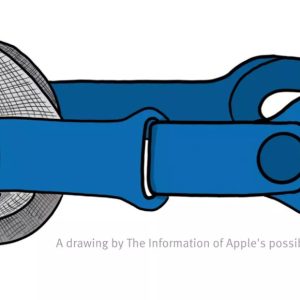The conditions under which the employees can better carry out their tasks and how the work will be designed in the new normal situation are discussed a lot. In addition to issues related to digital collaboration, digitization of processes, or virtual leadership, the physical workplace is becoming increasingly important: the space must be attractive and support business styles. Mixed styles, that is, the combination of physical and virtual collaboration, will be standard everywhere in the future. Companies have a direct influence on the design of their offices. Now is the time for CIOs to prepare everything for this type of work.
Future office
The goal is to design a seamless office as a work environment that integrates seamlessly between the office and the mobile work from anywhere. In design, emphasis should be placed on employees with different needs. In addition to the forms of work best suited to one or another environment, topics such as travel routes, home office equipment, and the state and stage of private life must be considered. If employees are given space for decision making, they will choose the best at their own risk. The ao office offers a space to meet and experience belonging.
Therefore office rooms should support collaboration on site and with connected teams as much as possible. CIOs should campaign on new cross-company business initiatives on topics such as: Are conference rooms adequate and equipped with technology for video conferencing? How is usability? How can artificial intelligence (AI) support employees and equip rooms with smart features? How can hygiene measures be usefully supported?
In addition, basic IT requirements must be met: comprehensive WiFi, cloud applications, mobile devices, standard docking stations, and adequate charging options. Video call workstations, creativity and relaxation rooms, as well as conference rooms with teamroom systems are other measures.
Use of data for improvement
Smart room solutions, like Campana & Schott’s CS Smartworkspace, are tailored to employee needs and integrated into the digital workplace. In addition, they provide officials with important information about the degree to which different types of space are used. Digital assistants, such as robots to control a conference room and reserve seats, ensure that they always find or even suggest a free and suitable site. Measures to comply with use limits, hygiene regulations, use-based cleaning or contact tracing can be combined. The resulting data can be used as a basis for decision-making to optimize space. In addition to designing office spaces, digitization of processes is another fundamental pillar of a seamless office. Because employees cannot work flexibly unless they no longer have to view paper files on site or manually sign documents. After “emergency solutions” in the first shutdown, operations should be more flexible. Here, IT managers must dare to take the next step: exploiting the potential of digitization through professionalism, change management and training.
To this end, the IT department should think about how to handle the growing demands and desires from the specialist departments. For example, it can enable end-users to optimize small processes themselves using low-code platforms. This can be done using Microsoft Power Platform built into the Digital Workstation. Or development teams can be created using organizational structures such as “application factories”, which develop applications more efficiently in the form of co-creation with specialized departments.
This is an article from our print version 3/2021. Request a free trial subscription.
There is no way back to the old world of work. Companies are on their way to the new normal and the smooth office now. It is important to develop a vision at an early stage of what the business will look like in the future. The following steps can be derived from this. Firms can create framework conditions, development is incremental and time consuming. CIOs can now put themselves through the first steps and create visual added value. After all, central IT tools play a major role in this. But technology is just one pillar: People and spaces will be just as important with every change.
Hybrid action has become the norm
Hypothetical collaboration will remain a reality for millions of people in the future, as the advantages of hybrid work become apparent to managers and employees alike – this is what a study by audio brand Epos shows. According to this, many executives now prefer virtual communications over face-to-face interactions, as they realize the huge potential of time (45 percent) and cost savings (41 percent). In fact, 85 percent of companies plan to introduce guidance and technology to support lean and hybrid work in the long term. At the same time, 65% believe that working remotely helps them reduce capital, operating and risk management costs. As employees move from open offices to home offices, executives are forced to rethink business models and investment priorities for equipment in the workplace. In doing so, some industries are taking the lead to ensure their companies are ready for the long-term transition to hybrid business.
Source: Epic

“Certified gamer. Problem solver. Internet enthusiast. Twitter scholar. Infuriatingly humble alcohol geek. Tv guru.”





